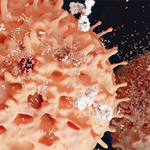In addition to getting individuals at risk for RA to participate, for RA prevention to work on a broader level, it will be critical to have the support of a wide range of stakeholders. These stakeholders include industry, which will need to develop trials, drugs and diagnostic tools that can be used in prevention; governmental agencies, which will support the trials and infrastructure development for prevention; insurance companies; and healthcare provider systems, which will also participate in delivery of prevention. Further, the field will require a host of biomedical researchers, including clinical, translational and basic scientists, trialists, epidemiologists, public health policy experts and health economists. Digital health and social media may be an important part of publicizing, identifying, monitoring and implementing prevention.
Where Clinicians Fit In
Notably, clinicians will be a crucial part of the implementation of prevention, especially in the early stages—now—because they are likely to be the first to identify individuals who can participate in prevention studies. Individuals may have been referred to a rheumatologist because of aches, pains and ACPA positivity in the absence of clear synovitis. The temptation may exist to just treat these individuals; however, rheumatologists should be aware that RA prevention studies may be recruiting near them and that these individuals can be referred to help provide an evidence basis for RA prevention.
Further, when prevention in RA and potentially other rheumatic diseases becomes more established, clinicians will be a critical part of delivering prevention to the population. Although RA is one of the first rheumatic diseases to be evaluated for prevention, other diseases, such as lupus and gout, that follow a similar model of development of biomarker abnormalities preceding clinically apparent disease may also be targeted with preventive efforts. Indeed, an intervention trial called SMILE (Study of Anti-Malarials in Incomplete Lupus) is underway to evaluate the effectiveness of hydroxychloroquine in preventing progression of disease in people at risk for lupus.30
In sum, multiple clinical trials are now underway that may soon lead to clinically actionable, paradigm-changing ways in how we approach RA, as well as other rheumatic diseases. These clinical trials will inform the biologic changes and natural history preceding the development of RA. If successful, these trials could provide an evidence basis for pharmacologic or lifestyle interventions for patients prior to the development of clinical synovitis.
There is potential for broad implementation of RA prevention, but more work needs to be done to understand the long-term potential benefits, harms and cost effectiveness of these strategies. This model informs other rheumatic diseases that follow a similar framework of biomarker abnormalities preceding clinical onset. Rheumatologists should be aware of these advances and consider contributing to research when they are able.


